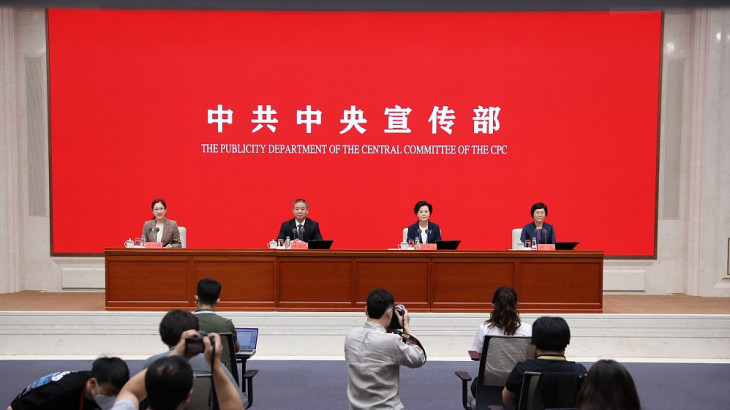How China has built the world’s largest infrastructural network

That China has become a global leader in science and technology is no longer debatable. This is most evident in the growth of the country’s infrastructural sector in the last decade. In a press conference on Tuesday in Beijing, ministry officials of industry and information technology gave an account of the massive developments in this sector.
Over the past 10 years, the access bandwidth of the optical fiber network has increased from 10 Mbps to 1000 Mbps, mobile networks have made breakthroughs in 3G, 4G and 5G, and broadband access has been extended to all administrative villages across the country, contributing to achieving the goal of poverty alleviation.
China has also seen deep integration of 5G, industrial internet, big data, cloud computing and artificial intelligence within the manufacturing sector, accelerating the digitisation of industries.
From copper wire to optical fiber, and from the popularisation of 3G to the commercial use of 5G, China has seen great improvements in information and communication technologies in the last ten years.
4G base stations in China now account for more than half of the world’s total. The number of 5G base stations in the country has reached 1.615 million and the number of 5G mobile phone users has exceeded 400 million. Use of innovative applications has expanded from consumption to production in China, forming one of the largest and most active digital service markets in the world.
The annual transaction volume of mobile payments has reached 527 trillion yuan (about $78.2 trillion), the new economy has created more than 20 million jobs and the total number of application cases in the 5G industry has exceeded 20,000. In the past 10 years, broadband access has been extended to all administrative villages in China, and information services have become cheaper across the country.
The average download rate of broadband networks has increased by nearly 40 times, and the average cost for unit data on mobile networks has fallen by more than 95 percent. China will continue to strengthen the development of new information infrastructure, promote extensive coverage of 5G networks, accelerate the large-scale application of 5G and other emerging technologies, and expand industrial cooperation.

China’s industrial output logged an average annual growth of 6.3 percent in the 2012-2021 period as the country’s manufacturing sector gained strength. The industrial value added output rose from 20.9 trillion yuan in 2012 to 37.3 trillion yuan in 2021. The growth was well above the global average of about two percent for the period.
The country accounted for 30 percent of the global manufacturing output in 2021, marking an increase from 22.5 percent in 2012 as the industry grew bigger and stronger. The manufacturing value added output expanded from 16.98 trillion yuan in 2012 to 31.4 trillion yuan in 2021.
Beneath the growing scale is the improving structure of the industrial economy, with traditional industries quickening the pace to upgrade emerging sectors such as service robots and intelligent wearable equipment showing robust momentum. The most revealing evidence is that China’s production and sales of new energy vehicles (NEVs) have topped globally for seven consecutive years since 2015. The accumulated sales of NEVs in China totaled 11.08 million units by the end of May, compared with 20,000 at the end of 2012.
Chinese brands occupied six of the global top 10 best-selling NEV models in 2021. Among the top 10 companies in terms of power battery shipments, six are Chinese. The share of high-tech manufacturing and equipment manufacturing in the country’s total industrial output had risen to 15.1 percent and 32.4 percent, respectively, in 2021.
The ministry noted that although the geopolitical conflicts and COVID-19 resurgence have added downward pressure on the industrial economy, the impacts have not been significant. From a long term perspective, the fundamentals of China’s complete and resilient manufacturing system have not changed. With continuous support policies, the industrial economy is expected to return to the normal track as soon as possible.
Continuous efforts are being made to consolidate China’s industrial chain and complete industrial system, improve weak areas and forge stronger ones, and promote the high-end development, intelligent upgrade and green transformation of the manufacturing industry.







